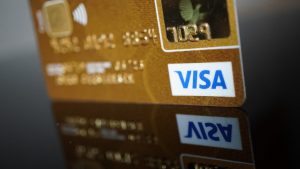SolStock/Moment/Getty Images
Key takeaways
- Suspecting a fraudulent credit card transaction should not be overlooked and can be addressed through certain protections and a refund process with the card issuer.
- It is important to confirm that the transaction is indeed fraudulent before taking action as mistaken accusations can cause problems.
- The Fair Credit Billing Act offers protections for unauthorized charges and limits your liability to $50.
- Important steps to help prevent credit card fraud include being cautious of suspicious emails and websites, checking bank statements regularly, and monitoring credit reports.
Do you see a transaction on your credit card statement that you don’t recognize? If so, you shouldn’t overlook this. It could well be a fraudulent transaction that you did not authorize.
If you investigate and find that the transaction indeed stems from fraud, as the credit card holder, you still enjoy certain protections — including the option of requesting a refund of the fraudulent charge with your card issuer. Here’s how to get a refund for a fraudulent credit card transaction on your credit card account.
Confirm that the transaction is fraudulent
Before you decide a credit card transaction is fraudulent, it is important to determine that the transaction is actually fraud. Just because you don’t recognize a charge doesn’t necessarily mean that somebody is using your card information illegally.
For instance, it could be that an authorized user on your account is responsible for the transaction. Prior to contacting your credit card company, be sure to check with any authorized users on your card to make sure they did not initiate the transaction.
Another possibility is that you don’t recognize a legitimate transaction because you can’t recall doing business with the named merchant. That could be a false alarm, too, since some merchants bill under a different identity from the one they conduct business with.
Also note that you shouldn’t report fraud just because you don’t want to deal with a merchant. Although it can be frustrating, there is a process for addressing situations such as:
- Not receiving goods or services you paid for
- Being billed for a recurring service that you canceled
- Not receiving a credit or refund on your card for a product or service you are not satisfied with
- Being charged twice for the same item
- Getting charged a higher amount than is on your receipt
Such incidents generally don’t qualify as fraud, and it would be in your best interest to try to sort out the issue with the merchant before reporting it as such. Negotiating with the merchant tends to be a faster process in these cases than initiating a dispute with your card issuer.
Dispute the charge to get a refund
Once you’ve determined that you are indeed dealing with a fraudulent transaction, you should inform your card issuer immediately. Your issuer will likely lock your card and issue you a new card with a new number. All four of the major card networks offer zero liability policies for fraudulent purchases, so you will likely not be liable for any legitimate fraudulent charges.
For example, Visa requires issuers to credit you for unauthorized charges within five days after you notify them. However, the credit is provisional and could be reversed if they determine after investigation that you were guilty of “gross negligence” or fraud yourself. Credit could also be withheld, delayed or limited based on your account standing and history, delays in reporting your loss or for other findings of the investigation.
The Fair Credit Billing Act (FCBA) also offers protections for so-called billing errors, which include unauthorized charges. Under federal law, your liability for fraudulent use of your card is capped at $50.
To take recourse using FCBA protection, send a dispute letter that outlines your billing problem to the issuer’s stated address for billing inquiries. You should send this so that it reaches your issuer within 60 days of when the first statement with the fraudulent charge was mailed to you. As a precaution, send it by certified mail and ask for a return receipt so that you have proof of receipt. The issuer should settle the matter within 90 days of getting your letter.
Tips to prevent card fraud
Although credit card scams are not entirely preventable, there are steps you can take to help keep your credit card information more secure. These include:
- Don’t give out your credit card number online unless you recognize a site to be secure.
- Use a virtual credit card while shopping online whenever possible.
- Make sure merchants you are dealing with are reputable.
- Research merchants to make sure they’re legitimate, using resources such as the Better Business Bureau and online customer reviews.
- Just because a business has a flashy website doesn’t mean it’s legitimate.
- Watch out for unsolicited emails such as those offering investment opportunities (for instance, the notorious ‘foreign prince’ scams), which are likely phishing attempts.
- Be cautious in undertaking transactions with overseas individuals and businesses.
The bottom line
If you suspect you did not authorize a credit card transaction, confirm it is indeed fraudulent and immediately report any fraud to your card issuer. Thanks to zero fraud liability policies, you will likely get credited the amount involved shortly. Even in the unlikely instance that you’re not covered by zero fraud liability policies, thanks to the Fair Credit Billing Act, you still are not liable for more than $50 in unauthorized charges.
Read the full article here










